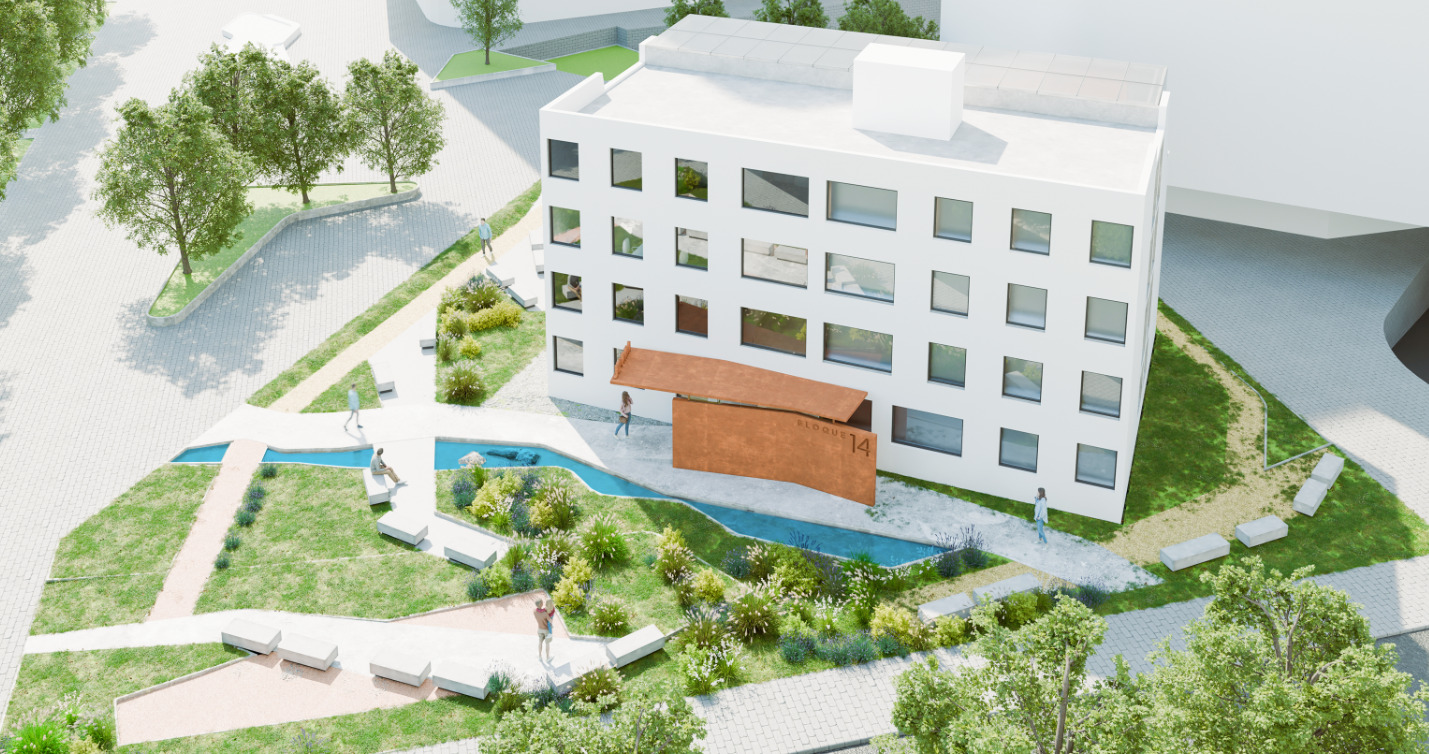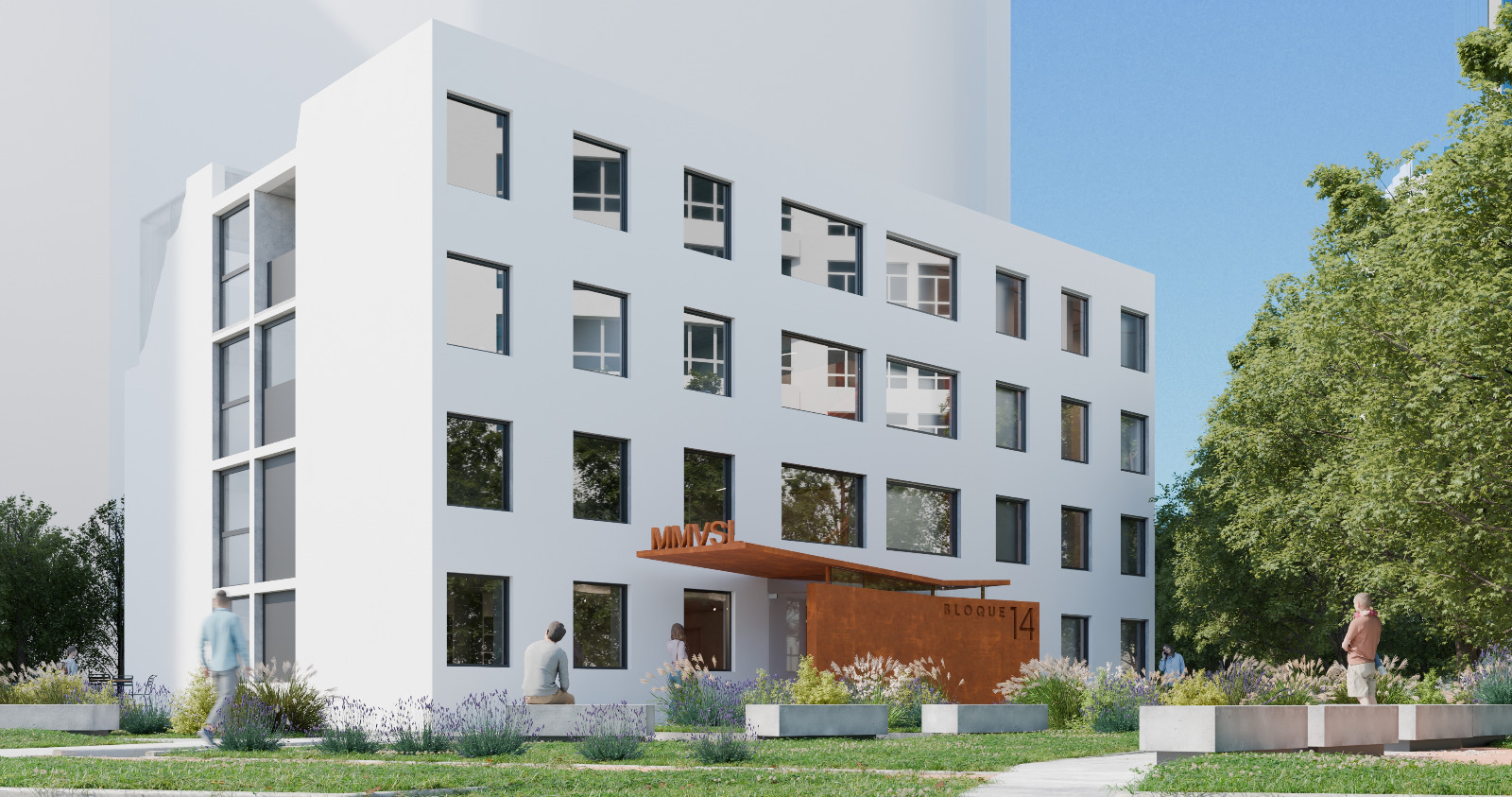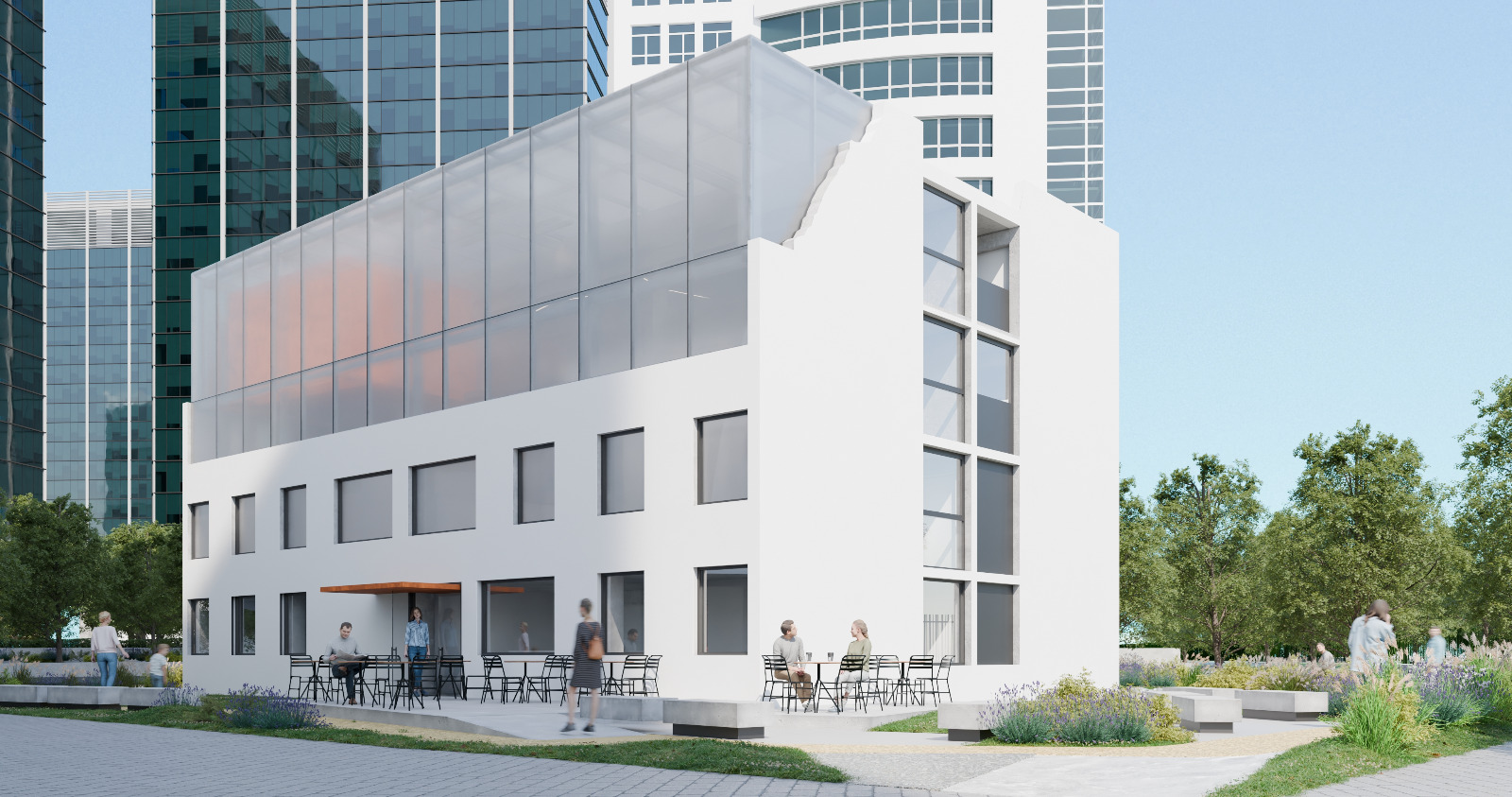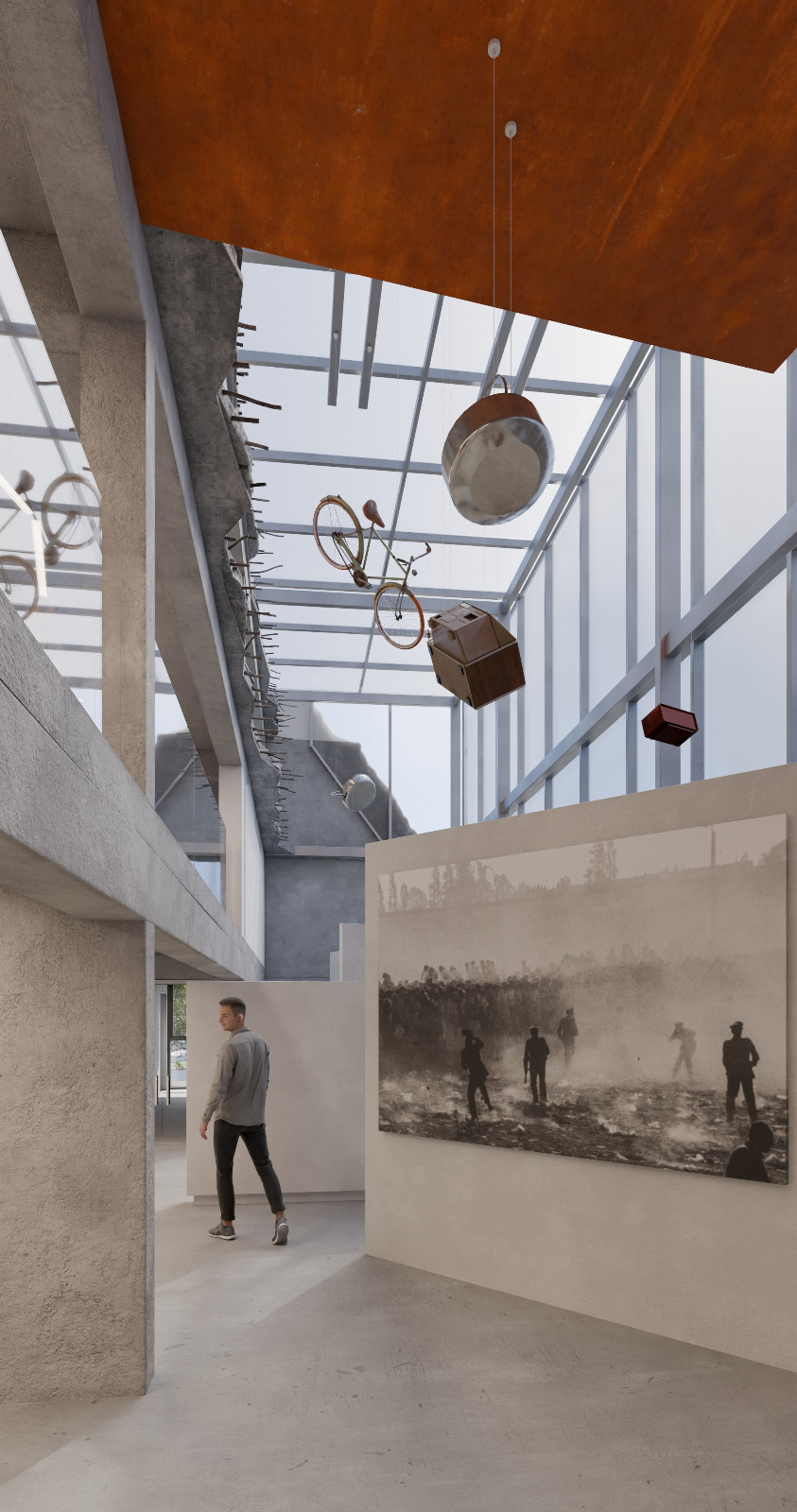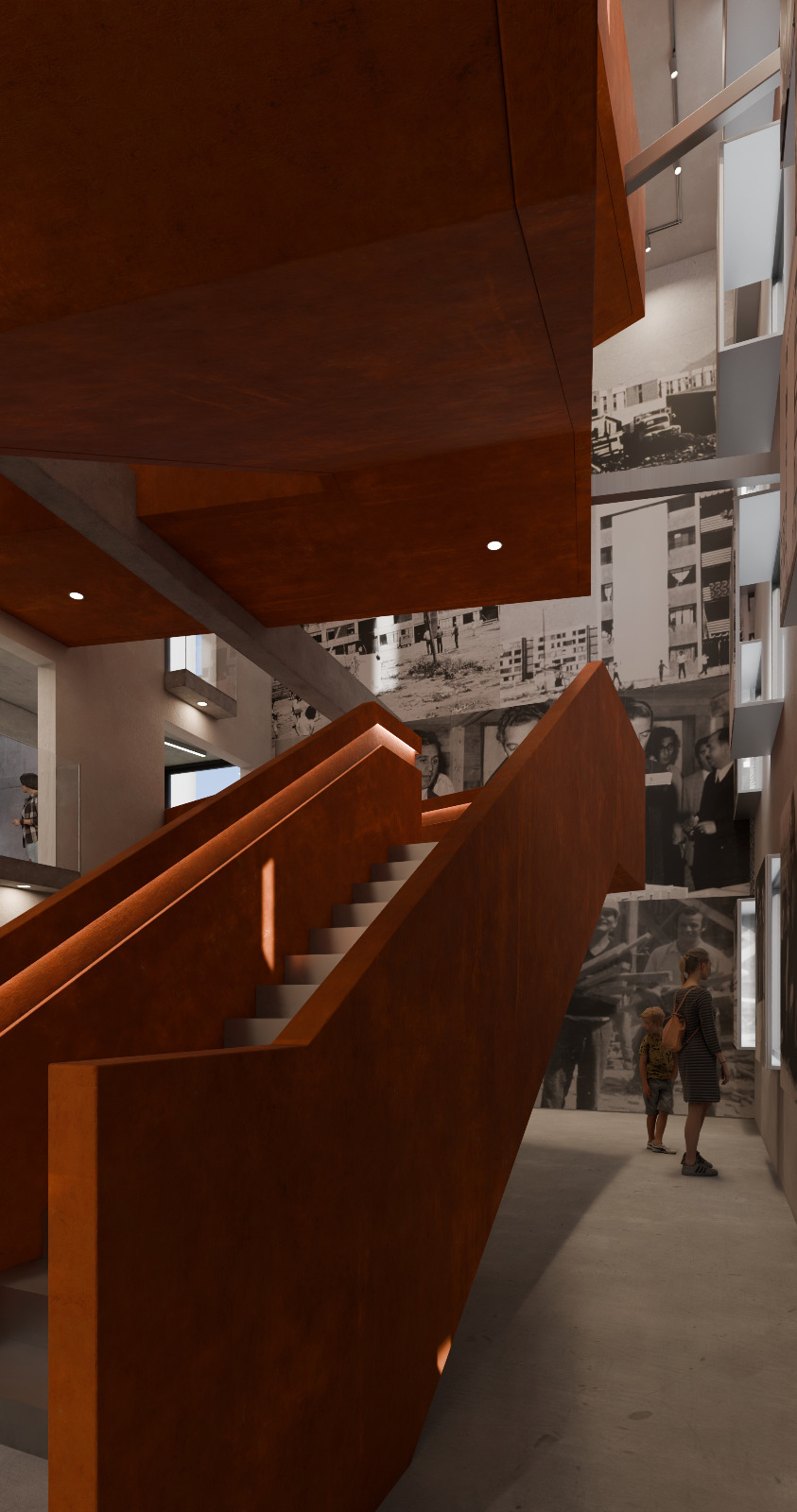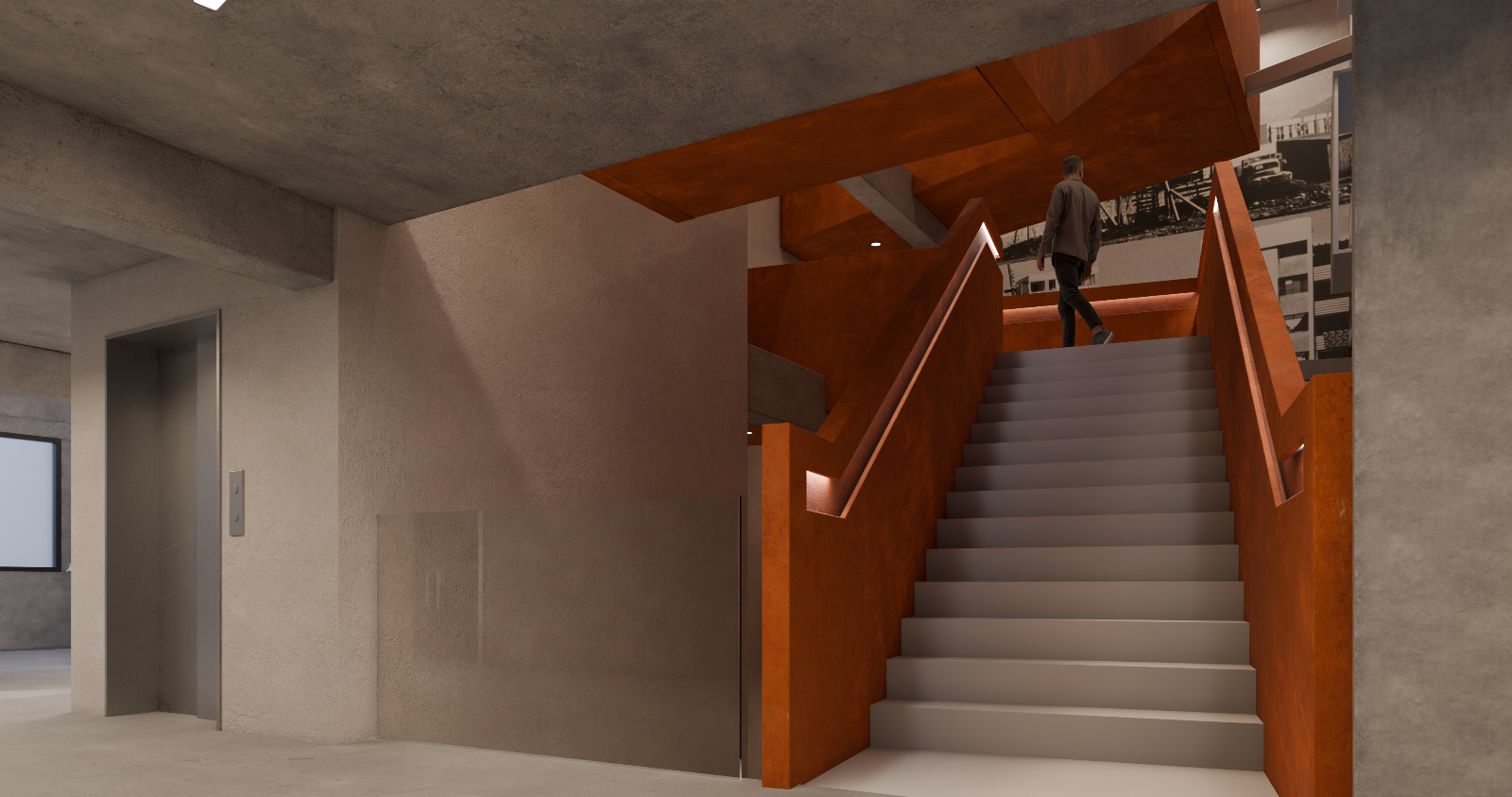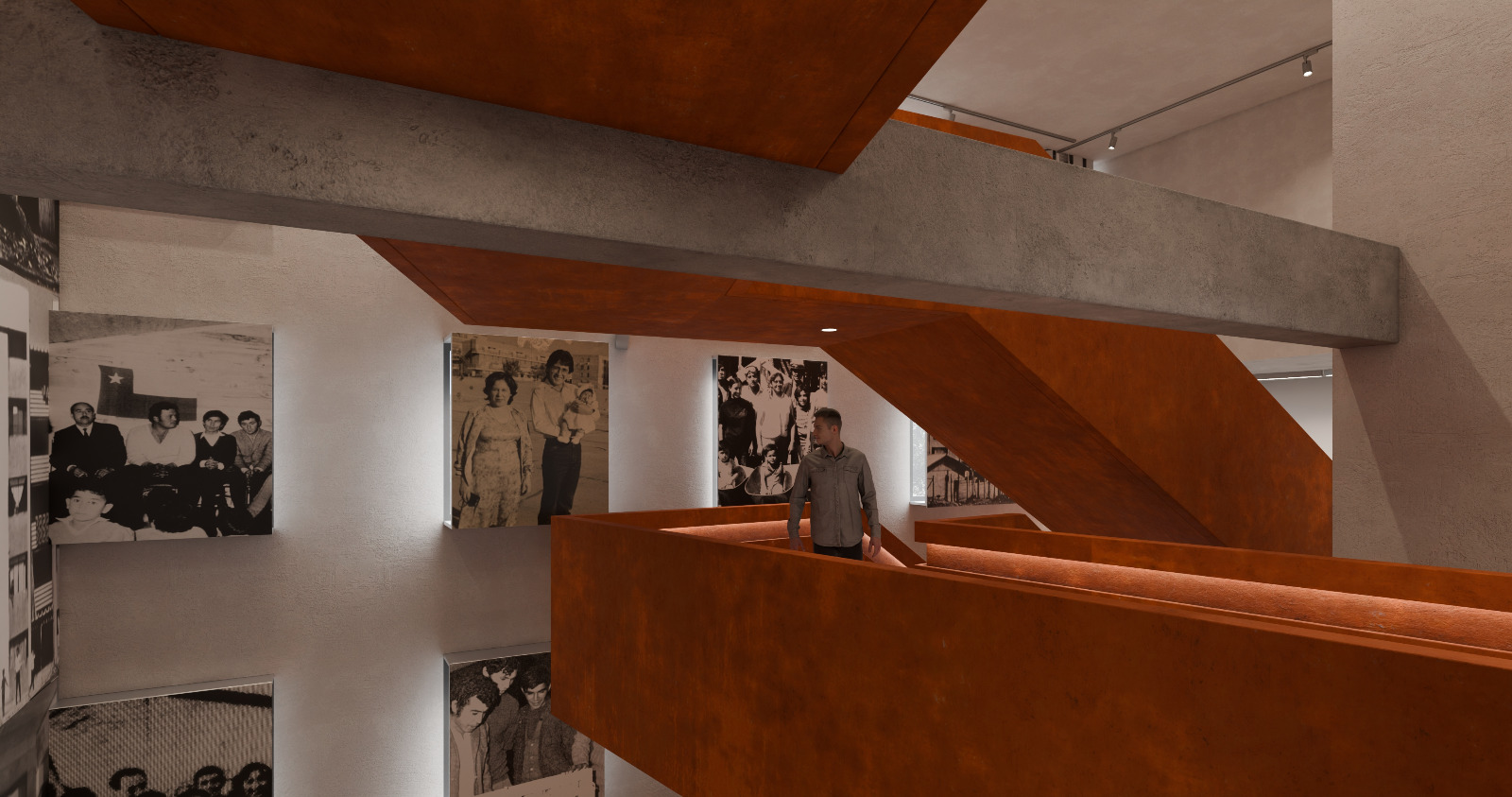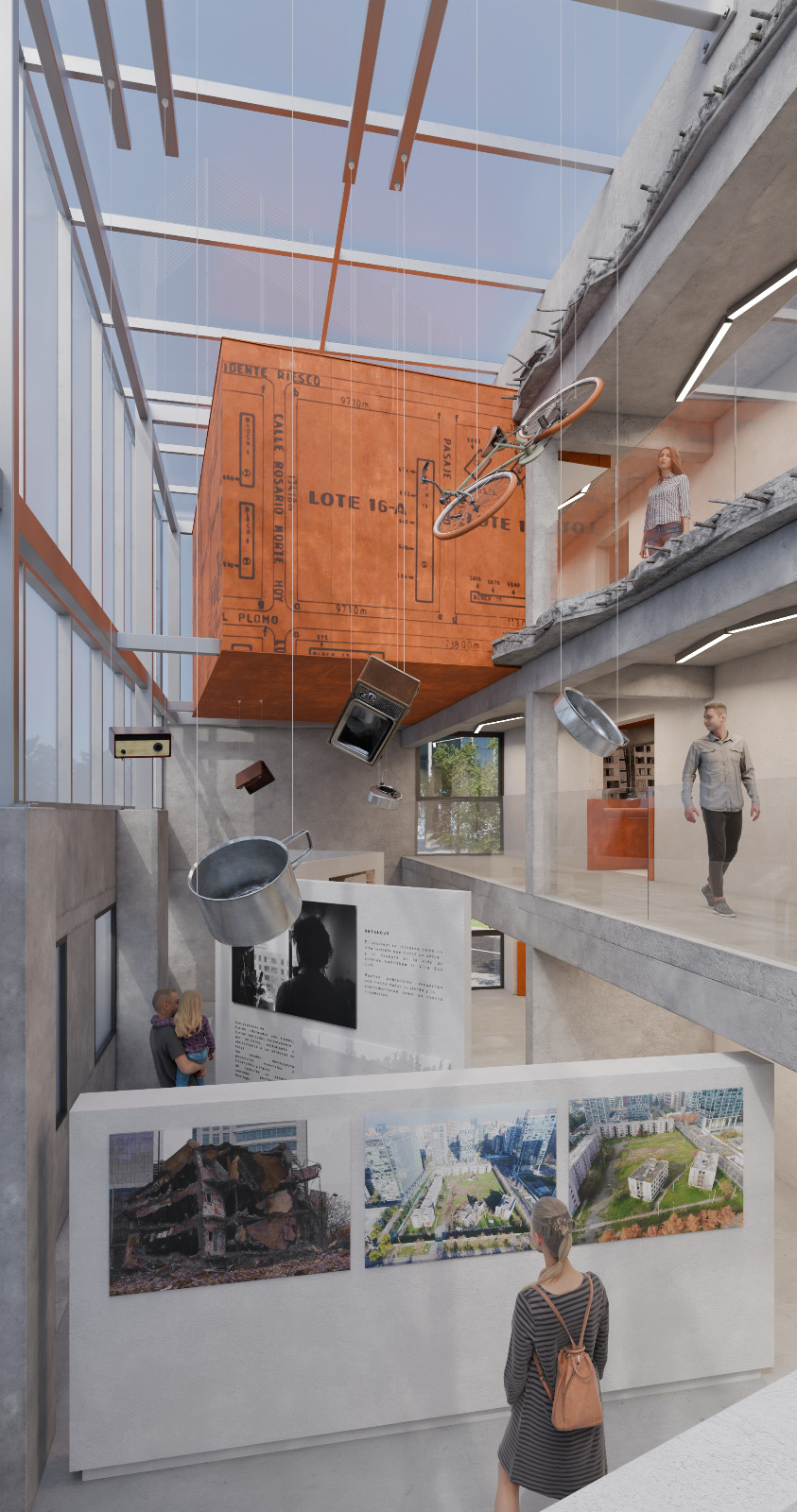Location: Las condes, santiago, chile
Typology: Memorial Museum
Size: 800 m2
Status: Submission
The proposal for the Museum tries to be as respectful as possible in order to accommodate the new function of memorial museum that block 14 will have.
The general image of the original project is maintained through the rehabilitation of the painted stucco facades, maintaining the original openings and entrances. A minimalist aesthetic is sought that respects the composition and volume of the original project. Due to the height and lighting requirements for the exhibition halls, the removal of certain existing slabs for these programmatic spaces is proposed.
The proposal does not aim to alter the existing building, but rather to restore the existing spaces taking advantage of the voids left by the partial demolition and abandonment of the structure.
The interior facades of the building maintain their composition and are restored by working their interior as the scenography of the history of the town's inhabitants. Triple heights in exhibition spaces and circulation leave the visitor's imagination as to what those interiors previously encapsulated.
The visual connection between the levels is accentuated according to the finishes of the exterior walls, some being finished in white and used as exhibition backgrounds, as in the case of exhibit A.
Exposed concrete finishes demonstrate the rawness of the eviction and its consequences, as in the case of exhibits B and C. The vertical connections that take us to the different exhibition spaces try to make the visitor interact with the different narratives and at the same time show the building in its entirety.
In the demolished sector of the building, a curtain wall envelope is supported by a steel structure and seals the volume without altering its current state of demolition creating a triple-height space. This envelope is composed of a translucent, lightweight cladding that naturally illuminates the exhibition spaces B and C, making them the most dynamic space in the museum.
The slab and wall edges within this large void are preserved in their existing state, undergoing minimal interventions to preserve the memory of the events that occurred.
The restoration of one of the units on the fourth level, understood as the culmination of the historic journey, gives visitors a glimpse into the essence of what was lost.
The surroundings of the project are proposed as a series of spaces for contemplation, meeting and reflection. This is achieved through a network of trails which connect pockets that contain concrete “blocks” as urban furniture. Each block will be stamped with a number corresponding to the 27 demolished blocks.

